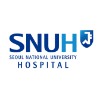The Effect of Asymmetric Spinal Stabilization Exercise on Scoliosis
Primary Purpose
Scoliosis Idiopathic
Status
Recruiting
Phase
Not Applicable
Locations
Korea, Republic of
Study Type
Interventional
Intervention
asymmetric spinal stabilization exercise
Sponsored by

About this trial
This is an interventional treatment trial for Scoliosis Idiopathic focused on measuring surface EMG, cobb angle, exercise, Spinal Curvatures
Eligibility Criteria
Inclusion Criteria:
- who have idiopathic scoliosis, showing at Cobb's angle over 10 degrees on X-ray
Exclusion Criteria:
- Patients who underwent spinal surgery
- Patients with spinal scoliosis due to cerebral palsy, muscle paralysis, polio, congenital spinal abnormalities
- Patients observed with Cobb's angle less than 10 degrees, over 40 degrees
- Patients complaining of acute low back pain
Sites / Locations
- Seoul National University Bundang HospitalRecruiting
Arms of the Study
Arm 1
Arm Type
Experimental
Arm Label
scoliosis patients
Arm Description
scoliosis patients who have cobb angle over 10 degree perform asymmetric spinal stabilization exercise
Outcomes
Primary Outcome Measures
cobb angle
measure lateral curve of vertebra on spine x-ray AP view
Apical vertebral rotation
angle of trunk rotation in Adam's test
surface electromyography
surface muscle contraction of bilateral spinal muscle on T7, T12, L3
Secondary Outcome Measures
Scoliosis Research Society-22(SRS-22) quastionnaire
five different factors (pain, self-image/appearance, function/activity, mental health, and satisfaction with management, 5 = best; 1 = worst)the minimum and maximum score range is from 5 to 25
Full Information
NCT ID
NCT03497520
First Posted
March 29, 2018
Last Updated
November 22, 2022
Sponsor
Seoul National University Hospital
1. Study Identification
Unique Protocol Identification Number
NCT03497520
Brief Title
The Effect of Asymmetric Spinal Stabilization Exercise on Scoliosis
Official Title
The Effect of Asymmetric Spinal Stabilization Exercise on Scoliosis
Study Type
Interventional
2. Study Status
Record Verification Date
November 2022
Overall Recruitment Status
Recruiting
Study Start Date
March 29, 2018 (Actual)
Primary Completion Date
February 16, 2023 (Anticipated)
Study Completion Date
February 16, 2023 (Anticipated)
3. Sponsor/Collaborators
Responsible Party, by Official Title
Principal Investigator
Name of the Sponsor
Seoul National University Hospital
4. Oversight
Studies a U.S. FDA-regulated Drug Product
No
Studies a U.S. FDA-regulated Device Product
No
Data Monitoring Committee
Yes
5. Study Description
Brief Summary
The purpose of this study is to evaluate the effect of asymmetric spinal stabilization exercise on scoliosis
Detailed Description
Design: Prospective study
Setting: hospital rehabilitation department
Intervention: Participants are educated asymmetric spinal stabilization exercise along scoliosis curve patterns, including the location of apex and the direction of convexity. After performing asymmetric spinal stabilization exercise, participants are compared the main outcome measures.
Main outcome measures: Cobb angle, Apical vertebral rotation in Adam's test, surface EMG, Scoliosis Research Society-22(SRS-22) quastionnaire
6. Conditions and Keywords
Primary Disease or Condition Being Studied in the Trial, or the Focus of the Study
Scoliosis Idiopathic
Keywords
surface EMG, cobb angle, exercise, Spinal Curvatures
7. Study Design
Primary Purpose
Treatment
Study Phase
Not Applicable
Interventional Study Model
Single Group Assignment
Masking
None (Open Label)
Allocation
N/A
Enrollment
150 (Anticipated)
8. Arms, Groups, and Interventions
Arm Title
scoliosis patients
Arm Type
Experimental
Arm Description
scoliosis patients who have cobb angle over 10 degree perform asymmetric spinal stabilization exercise
Intervention Type
Behavioral
Intervention Name(s)
asymmetric spinal stabilization exercise
Intervention Description
The patients were educated to strengthening weakness side of spinal muscle, as asymmetric spinal stabilization exercise(ASSE)
before teach ASSE, the investigators will evaluate Cobb angle, Apical vertebral rotation in Adam's test, surface EMG, Scoliosis Research Society-22(SRS-22) quastionnaire for evaluation of scoliosis severity
after perform ASSE, the investigators will evaluate Cobb angle, Apical vertebral rotation in Adam's test, surface EMG, Scoliosis Research Society-22(SRS-22) quastionnaire for evaluation of scoliosis severity
Primary Outcome Measure Information:
Title
cobb angle
Description
measure lateral curve of vertebra on spine x-ray AP view
Time Frame
through study completion, an average of 6 months
Title
Apical vertebral rotation
Description
angle of trunk rotation in Adam's test
Time Frame
through study completion, an average of 1 year
Title
surface electromyography
Description
surface muscle contraction of bilateral spinal muscle on T7, T12, L3
Time Frame
through study completion, an average of 6 months
Secondary Outcome Measure Information:
Title
Scoliosis Research Society-22(SRS-22) quastionnaire
Description
five different factors (pain, self-image/appearance, function/activity, mental health, and satisfaction with management, 5 = best; 1 = worst)the minimum and maximum score range is from 5 to 25
Time Frame
through study completion, an average of 1 year
10. Eligibility
Sex
All
Minimum Age & Unit of Time
8 Years
Accepts Healthy Volunteers
Accepts Healthy Volunteers
Eligibility Criteria
Inclusion Criteria:
who have idiopathic scoliosis, showing at Cobb's angle over 10 degrees on X-ray
Exclusion Criteria:
Patients who underwent spinal surgery
Patients with spinal scoliosis due to cerebral palsy, muscle paralysis, polio, congenital spinal abnormalities
Patients observed with Cobb's angle less than 10 degrees, over 40 degrees
Patients complaining of acute low back pain
Central Contact Person:
First Name & Middle Initial & Last Name or Official Title & Degree
Jusuk Ryu, M.D. PhD
Phone
+82-31-787-7739
Email
jseok337@snu.ac.kr
First Name & Middle Initial & Last Name or Official Title & Degree
Yulhyun Park, M.D.
Email
yulhyunp@gmail.com
Overall Study Officials:
First Name & Middle Initial & Last Name & Degree
Jusuk Ryu, M.D. PhD
Organizational Affiliation
Seoul National University Bundang Hospital
Official's Role
Study Director
Facility Information:
Facility Name
Seoul National University Bundang Hospital
City
Seongnam
State/Province
Gyeonggi-do
ZIP/Postal Code
463-707
Country
Korea, Republic of
Individual Site Status
Recruiting
Facility Contact:
First Name & Middle Initial & Last Name & Degree
Jusuk Ryu, M.D, PhD
Phone
+82-31-787-7739
Email
jseok337@snu.ac.kr
First Name & Middle Initial & Last Name & Degree
Jeehyun Suh, M.D
Phone
+82-31-787-6559
Email
suhtwins@hanmail.net
12. IPD Sharing Statement
Plan to Share IPD
Undecided
Learn more about this trial

The Effect of Asymmetric Spinal Stabilization Exercise on Scoliosis
We'll reach out to this number within 24 hrs